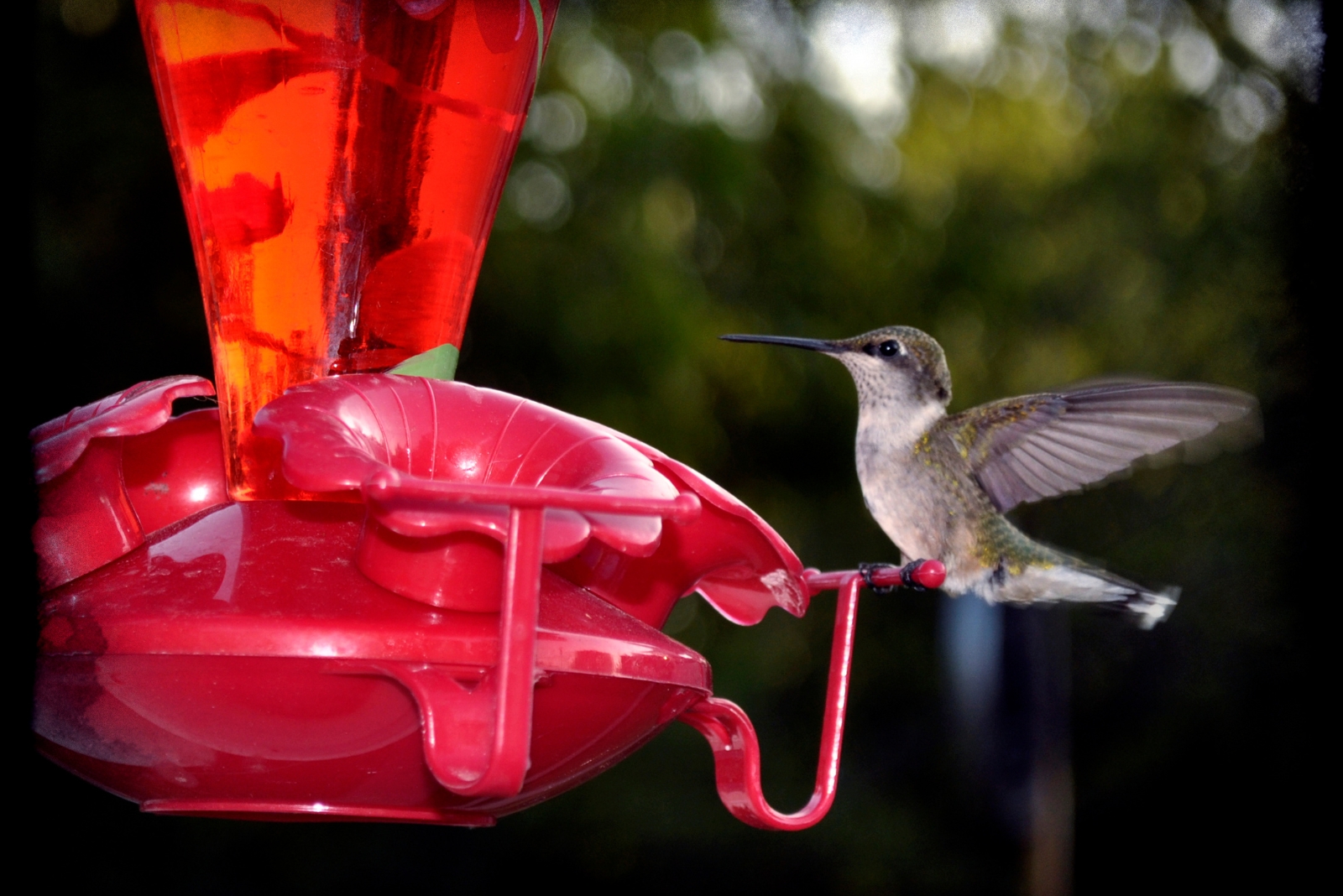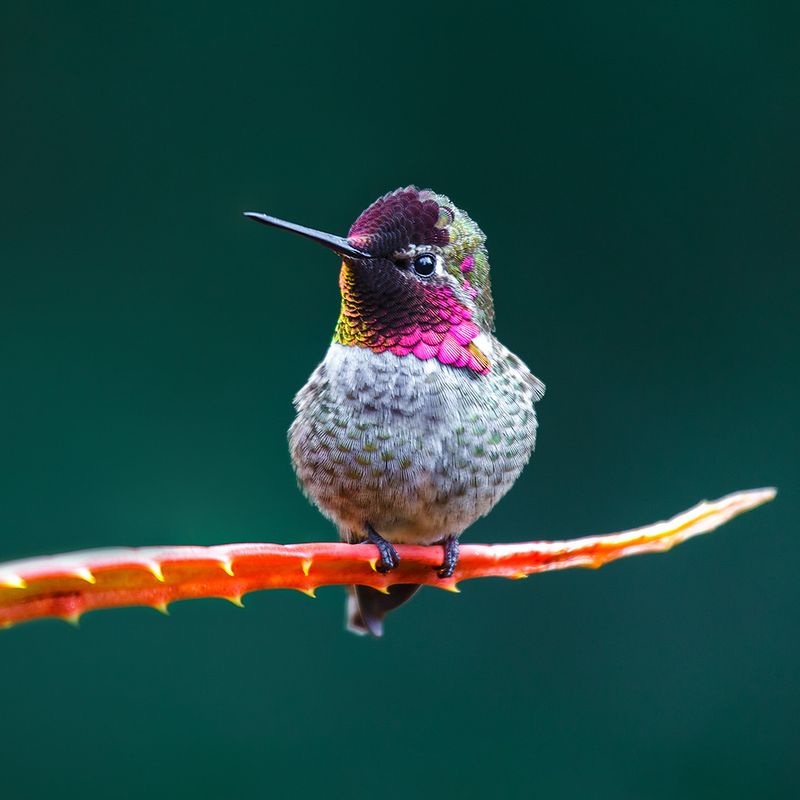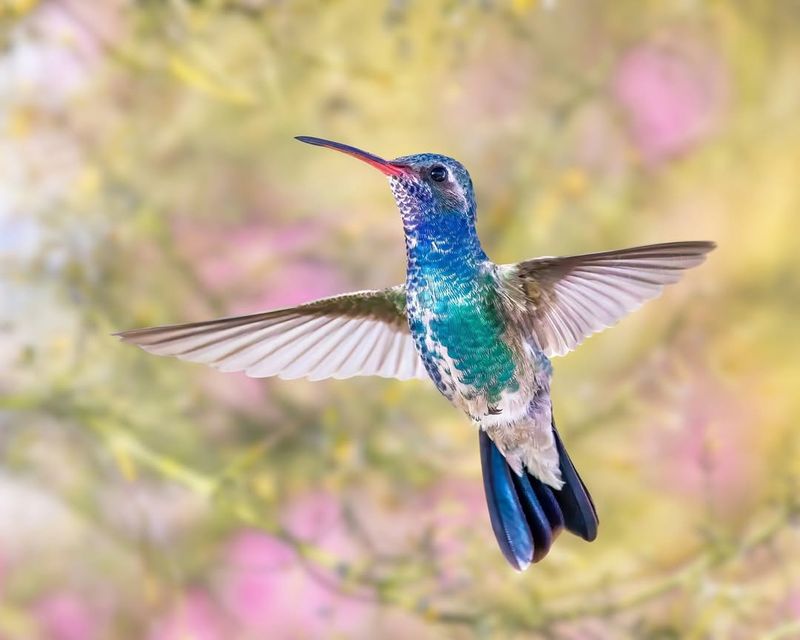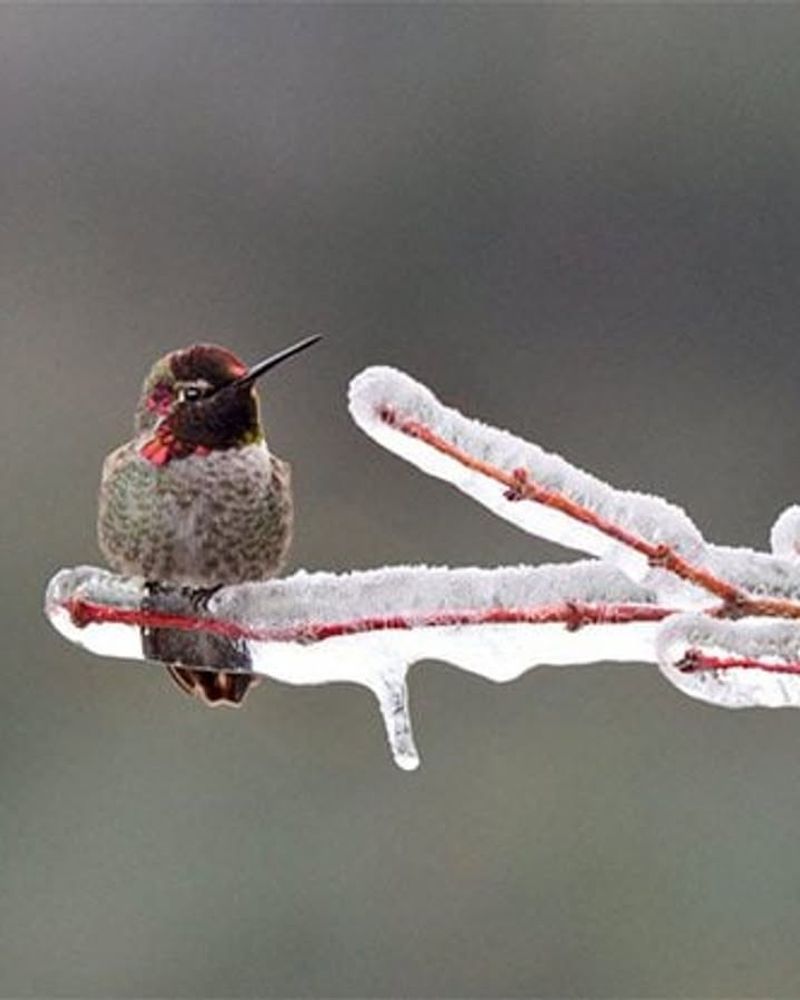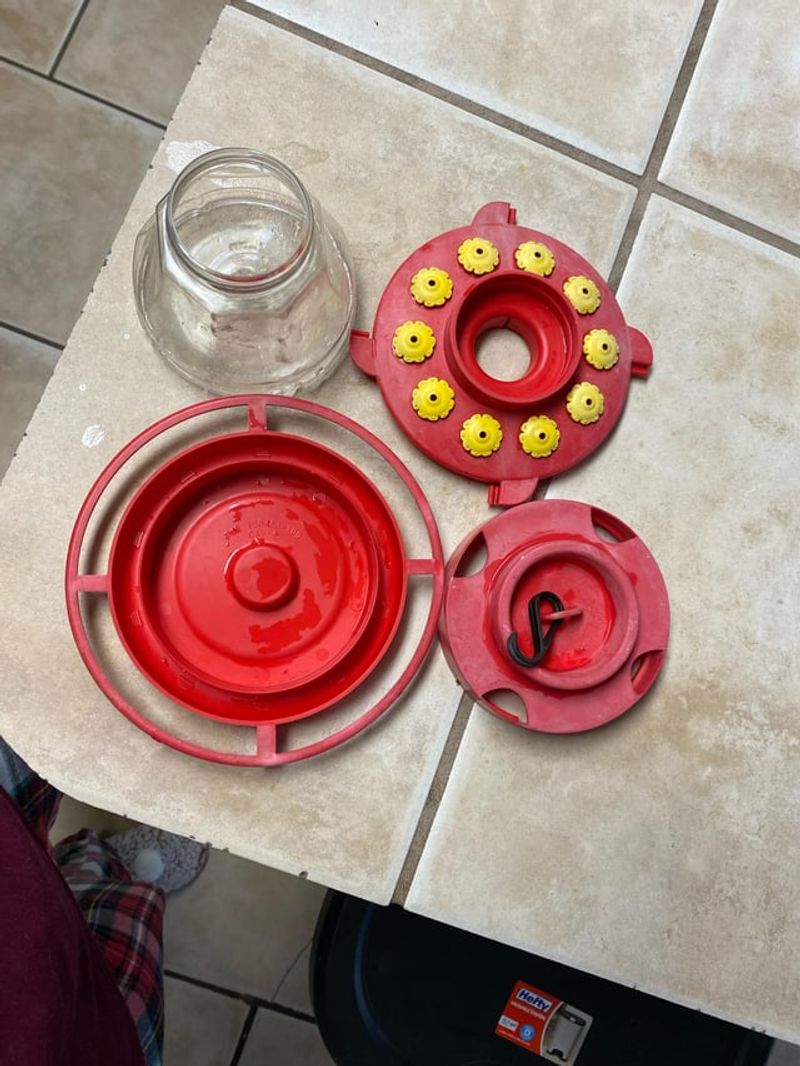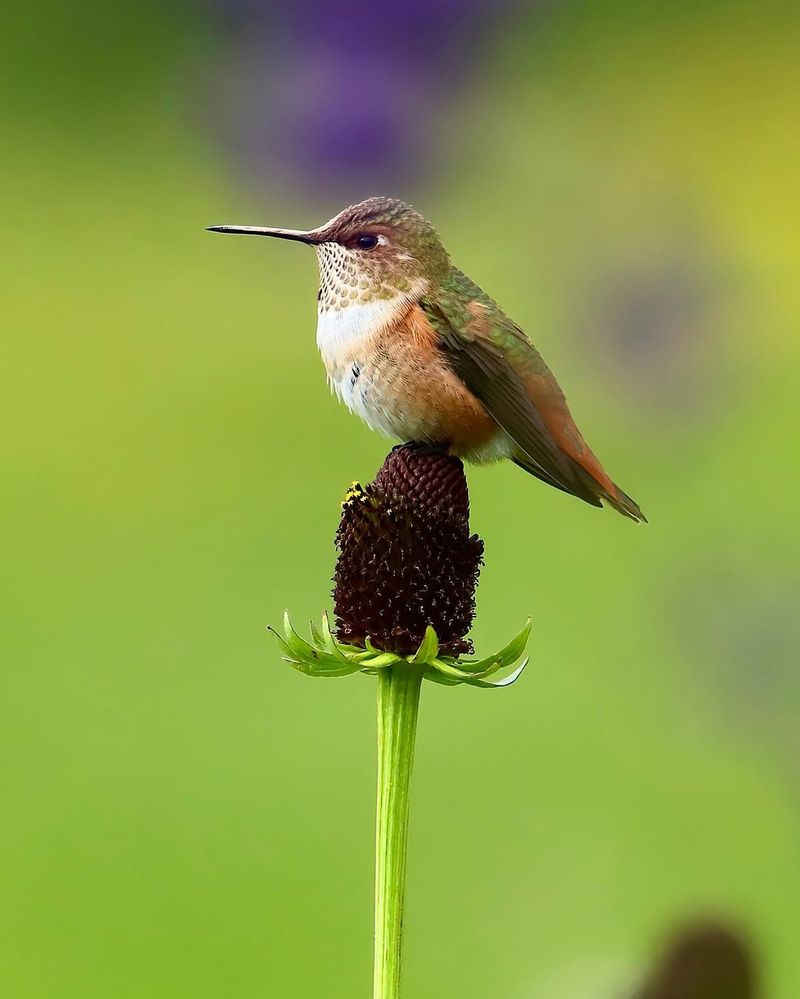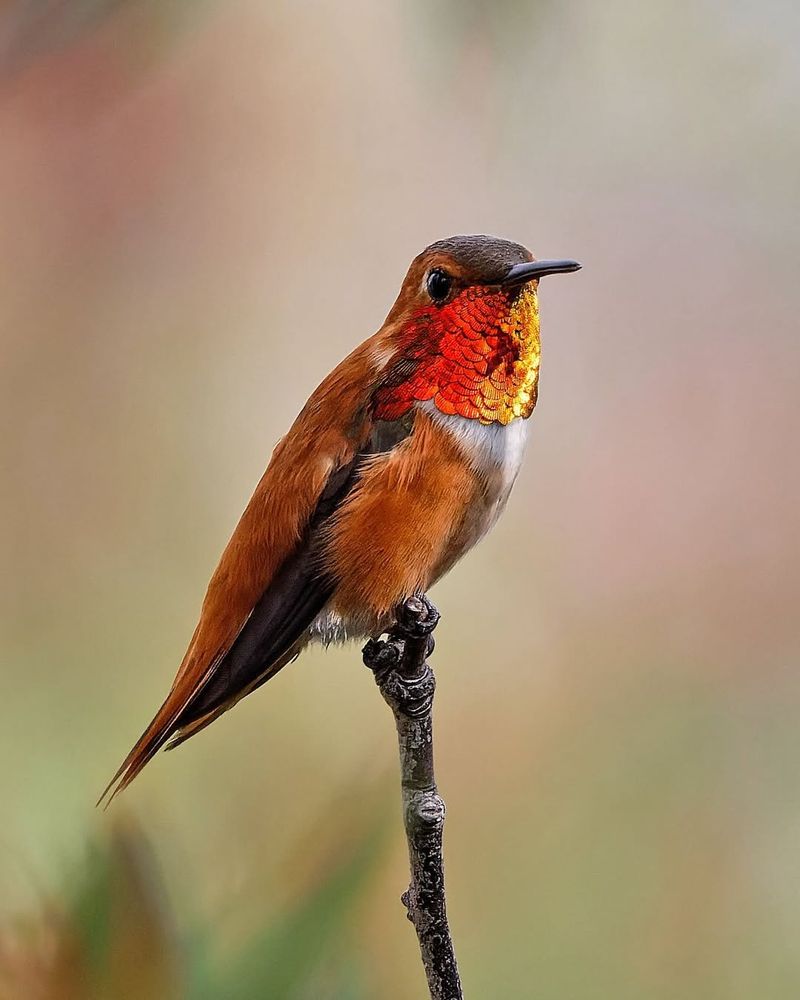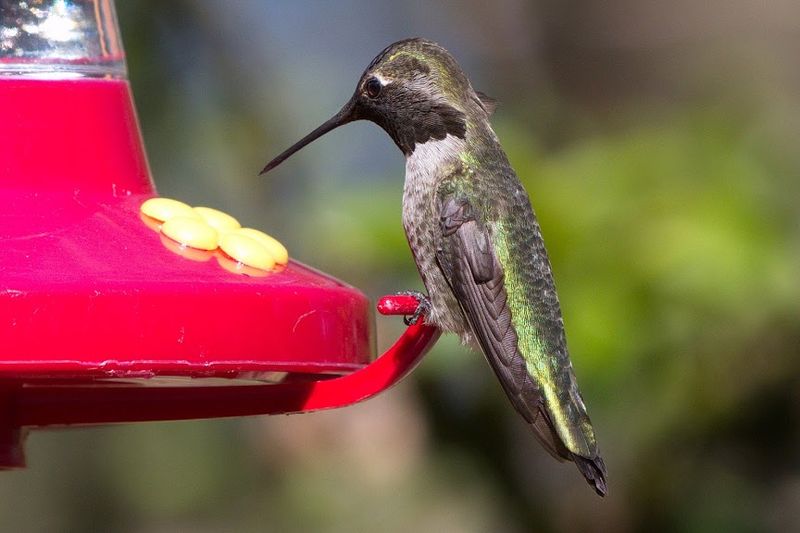Hummingbirds are amazing visitors to California gardens, bringing color and energy all year long. Many people wonder if they should ever take down their feeders, especially when seasons change.
Understanding the right timing helps protect these tiny birds while keeping your backyard a welcoming place for wildlife.
1. California Hummingbirds Stay Year-Round
Unlike many other states, California hosts hummingbirds throughout every season. Anna’s Hummingbirds, the most common species, don’t migrate south for winter. They stick around backyards and gardens even during colder months.
Because of this, taking down your feeders might actually harm local birds that depend on them. Keeping feeders up provides vital nutrition when natural flowers become scarce. Your feeder becomes a lifeline during rainy or chilly periods when insects and blooms are harder to find.
2. Migration Myths Can Mislead You
A common misconception suggests that leaving feeders up prevents hummingbirds from migrating. This isn’t true at all. Migration instincts are triggered by daylight changes and internal biological clocks, not food availability.
Hummingbirds will migrate when nature tells them to, regardless of your feeder. Removing feeders won’t encourage them to leave; it only eliminates a helpful food source. Supporting them during migration actually helps travelers refuel for their long journeys ahead.
3. Winter Feeding Supports Resident Birds
Cold months in California bring fewer flowers and insects, making feeders especially important. Resident hummingbirds need constant energy to maintain their incredibly fast metabolism and body temperature.
During winter storms or foggy mornings, natural food sources disappear almost completely. Your feeder might be the only reliable meal available for miles around. Keeping it filled ensures local birds survive harsh weather and remain healthy through challenging conditions that test their endurance.
4. Feeder Maintenance Matters More Than Removal
Rather than worrying about when to remove feeders, focus on keeping them clean and fresh. Moldy or fermented nectar can make hummingbirds seriously ill.
Change the sugar water every three to five days, more frequently during hot weather. Wash feeders with hot water and a bottle brush, avoiding soap that leaves harmful residue. Proper care prevents disease and keeps your feeding station safe and inviting for every visitor throughout the entire year.
5. Migrating Species Pass Through California
While Anna’s Hummingbirds stay put, other species like Rufous and Allen’s Hummingbirds travel through California during spring and fall. These travelers desperately need refueling stations along their routes.
Your feeder becomes a critical rest stop where exhausted migrants can recharge before continuing their journeys. Removing feeders during migration seasons could leave these birds without essential energy sources. Supporting migration helps entire populations survive their incredible cross-country adventures successfully.
6. Natural Food Sources Vary By Season
California’s Mediterranean climate creates unpredictable blooming patterns throughout the year. Summer droughts can reduce flower production dramatically, while winter rains might delay spring blooms.
When natural nectar becomes scarce, hummingbirds turn to reliable feeders for survival. Supplementing their diet during lean times prevents starvation and supports healthy populations. Your consistent feeding efforts balance out nature’s inconsistencies, creating stability for birds navigating changing environmental conditions beyond their control.
7. Never Take Down Feeders In California
Bottom line: California residents should keep feeders up permanently. Year-round residents and migrating visitors both benefit from consistent food availability.
Instead of seasonal removal, commit to regular maintenance and fresh nectar supplies. Your dedication creates a dependable habitat that supports biodiversity and brings joy to your outdoor space. Watching these jeweled flyers visit daily reminds us how small actions make meaningful differences for wildlife sharing our communities and landscapes.

